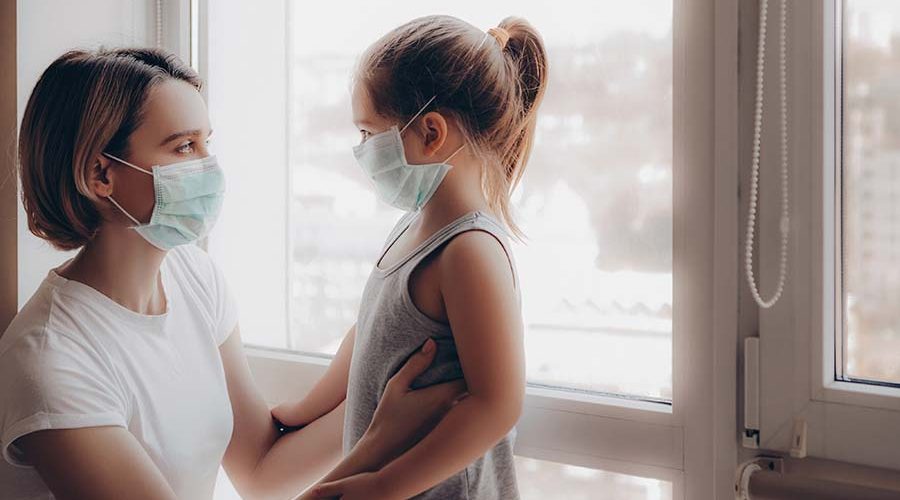John Moss, Sales Director – Home at EnviroVent, looks at how good ventilation is more important than ever in social housing.
EnviroVent Ltd
Recent studies have shown that airborne transmission of COVID-19 presents a serious risk and could be a significant factor in the spread of the disease. Transmission can be either through large droplets or small airborne aerosol particles, which can be emitted when sneezing, coughing or talking. Small droplets remain in the air for longer and can travel further than large droplets and could; therefore, cause greater risk. Another prime method of transmission is through surface contact via hand-to-hand or hand-to-surface, which is why good sanitation is essential.
Evidence from the European Centre for Disease Prevention and Control (ECDPC) states that poor ventilation in confined indoor spaces is associated with increased transmission of respiratory infections, such as COVID-19. Studies of 318 outbreaks in China demonstrated that transmission in all but one case had occurred in indoor spaces.
The length of time that people stay in an indoor setting appears to increase the transmission rate. According to ECDPC, research into an outbreak in a call centre in South Korea found there was a COVID-19 incidence rate of 43.5% amongst 216 employees on the ninth floor, which indicated extensive transmission in a crowded indoor workplace. Almost all those affected were seated on the same side of the ninth floor. Even though ninth-floor staff had interacted with colleagues on other floors, the infection had not been transmitted, which suggested that length of time in contact is a major factor in its spread.
In another case in China, 23 out of 67 passengers on a bus were infected by one passenger. However, all passengers that were seated close to a window remained healthy, apart from the passenger sitting next to the infected case. This and further evidence have suggested that transmission of COVID-19 is more likely to occur in closed indoor spaces with poor ventilation.
There is currently no evidence of human infection with SARS-CoV-2 (COVID-19) caused by infectious air particles being distributed through the ventilation system ducts of HVACs.
These systems are rated as very low risk; however, it is believed that COVID-19 aerosols (small droplets) can be spread through HVAC systems within a building or vehicle or standalone air conditioning units if air is recirculated.
It has been concluded that HVAC systems may play a complementary role in decreasing transmission of infection in indoor spaces by increasing the rate of air change, which reduces the recirculation of air and increases the use of fresh outdoor air.
Building facilitators have long been advised that they should maintain heating and ventilation systems in homes and commercial premises in accordance with manufacturers’ instructions, particularly in relation to the cleaning and changing of filters. There is not believed to be any benefit or need for additional maintenance cycles in relation to COVID-19, beyond those already recommended.
Prior to the arrival of COVID-19, there was already compelling evidence presented by the Royal College of Paediatrics and Child Health (RCPCH) and the Royal College of Physicians which demonstrated that respiratory problems among children may be exacerbated by indoor air pollution in homes, schools and nurseries.
Latest advice
Where ventilation systems are specified, the latest advice is that they should minimise recirculation and bring in fresh outdoor air instead. Increasing the number of air exchanges per hour will reduce the risk of transmission in closed spaces. Mechanical ventilation, such as through MVHR systems like the energisava range, brings in fresh, filtered air from outside and gently ventilates the indoor space, whilst extracting contaminated air outdoors.
MVHR offers a way of carefully controlling whole-house ventilation by supplying and extracting air continuously at a low rate, with no need for background ventilators. SAP favours MVHR which is often installed in new, airtight and well-insulated housing schemes.
A popular way that local authorities often adopt to improve indoor air quality within existing homes is Positive Input Ventilation (PIV).
These whole-house systems, such as ATMOS, can be located in the loft of a house or the wall of a flat. They supply fresh, filtered air into the hallway to ventilate the whole property.
This method delivers air into the home which dilutes, displaces and replaces high humidity levels, which not only controls condensation but also improves indoor air quality. PIV is most commonly fitted into renovated and retrofitted properties, and compliance with installation is essential.
Research into reduction of risk
Research into COVID-19 and the role ventilation plays in reducing its spread is still in its early stages. Significantly, though, ventilation has been found to play a key role in the dilution of particles which could minimise the risk of transmission or could prevent the transfer of an infectious dose to susceptible individuals.
More work is being done to establish technical specifications and standards for mechanical ventilation systems in order to reduce the risk of COVID-19 spread, and further scientific studies are currently underway. The technical specifications will need to be defined for categories of room or location type, ventilation, purpose, number of occupants and the user activity. In general, mechanical ventilation should be arranged to minimise the direction of sustained airflow for stationary persons and; therefore, prevent any risk of spread.
COVID-19 has highlighted the need for good ventilation in buildings – something that has already been recognised for decades by many in the social housing sector. Improving indoor air quality (IAQ) is required to reduce pollutants, such as those from smoking and volatile organic compounds (VOCs) as well as to reduce condensation and mould growth. To add to this list is the potential of reducing the risks of infectious disease spread.
Many experts have noted that a badly ventilated building is an ill building and ‘sick building syndrome’ has been widely publicised in recent times. Poorly ventilated buildings are those which will inevitably lead to ill occupants and never has this been truer than today; therefore, ensuring homes are effectively ventilated is more important than ever.










